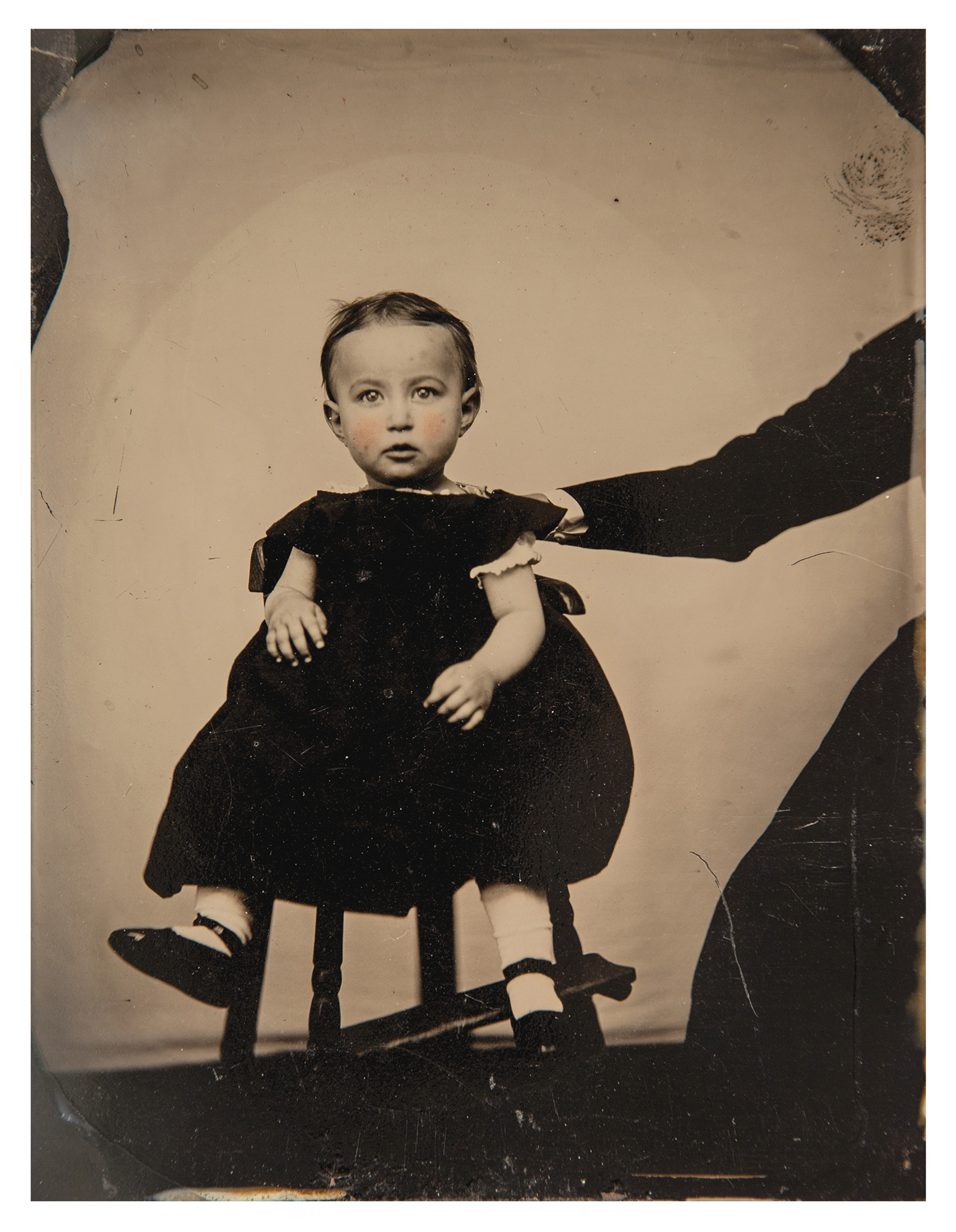Artist Project / Hidden Mother
Maternal indistinct
Laura Larson
In nineteenth-century portrait studios, photographers employed a number of different techniques to stabilize the body for the long exposures required to make portraits. A sitter might lean on a pedestal to steady herself, or allow her neck to be held in a pincer-like brace. But these methods were of little use when it came to the small, unruly body of a child. Instead, the photographer frequently enlisted the mother, who, hidden by studio props, supported or soothed her child:
The mother takes at once a seat along side [sic] the child, in order to give it a felling [sic] of security, and passing her hand through the back of the chair, she seizes the child firmly. Focusing must be done quickly. At this moment, the proper working together of two persons is all-important. While one of them occupies the attention of the child, the other watches for the moment of perfect quietness; to make it last as long as possible is the main object.[1]

Playing a structural but visually peripheral role in these portraits, the hidden mother appears in many forms. Often, she is swathed in fabric, like a ghost, her concealed lap acting as a pedestal for her infant. She is armature; she is background. Her form becomes indistinguishable from the appointment of the scene. The tension between the pictorial and the corporeal is written in the bulges of the fabric. Sometimes, the mother inhabits the margins of the frame, the fact of her body several feet away providing enough reassurance to allow the child to sit quietly. Her arm reaches into the frame or she crouches behind a chair or pram, perhaps whispering to the baby, “Mama’s here.” Touch, release.
When the portrait’s staging is insufficient for the task, the photographer turns to a number of post-production strategies to isolate the child on the finished plate. A simple paper mat placed over the plate vignettes the image, centering the baby and displacing the mother. Sometimes the measures are more drastic. If she cannot be concealed, her face is scratched away, revealing the black enameled surface of the tintype’s iron substrate. Alternatively, a thin layer of black paint could mask her presence. The implicit violence of these practical strategies raises the question: Why not photograph the mother and child together?
• • •
The wet collodion process, introduced in 1850 and actively used through the 1870s, produced the ambrotype, the tintype, and the glass negative, innovations that democratized photographic portraiture. Unlike modern analog photography, which segregates optics and chemistry, the wet plate is messy and fraught with contingency—the wet and the dry in risky proximity. Collodion—made from a combustible mix of pyroxylin, ether, and alcohol, and also used as a kind of liquid skin to dress and seal wounds—is poured onto the plate. Coated with this viscous substrate, the plate is dipped into a silver bath to sensitize it for exposure. The photographer must quickly shoot and develop the plate before it dries and its light sensitivity is compromised.